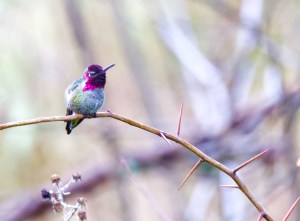Protecting butterflies by planting violets in coastal counties
Published 10:48 am Tuesday, July 14, 2015

- Jason Spear, 23, and Ari Freitag, 25, summer stewardship interns for the North Coast Land Conservancy, unload numerous beds of early blue violets at the organization's Circle Creek property. The conservancy intends to sow approximately 19,000 violet plants on Clatsop Plains and Long Beach Peninsula properties as part of a long-term research project. One of the goals of planting the violets is to create a habitat to foster Oregon silverspot butterfly repopulation. Planting is scheduled to occur later this fall.
Conservancy brings native flowers closer to home
Trending
By Katherine Lacaze
EO Media Group
SEASIDE — The North Coast Land Conservancy recently received a large delivery at its Circle Creek Habitat Reserve: About 19,000 early blue violet plants, tucked safely in beds until the flowers are ready to be planted in the fall to help bring back the Oregon silverspot butterfly.
Trending
On June 30, Stewardship Director Melissa Reich and the conservancy’s summer stewardship crew guided the violets’ journey from a nursery in Tillamook to the Circle Creek property, where they will stay for the time being. Come fall, the violets, which were grown using seeds propagated from the seeds of native Clatsop County plants, will be taken to their permanent homes on the Clatsop Plains and the Long Beach Peninsula, where volunteers have been establishing butterfly habitat on U.S. Fish and Wildlife Service property near Tarlett Slough and the PUD building.
“The plants have had a long journey, and they have a long journey ahead of them,” Reich said.
The journey started when the conservancy gathered seeds from flowers growing on its salt spray meadow properties on the Clatsop Plains. Those seeds were sent to the Natural Resources Conservation Service’s Plant Materials Center in Corvallis, where they were planted to make a full bed of flowers. Once the flowers had matured, the center gathered a bag of their seeds and sent them to the conservancy as part of a process known as seed banking, land conservancy Executive Director Katie Voelke said.
In January 2014, staff and volunteers planted nearly 20,000 seeds into individual containers at the North Coast Restoration Partnership’s temporary native plant nursery in Tillamook. Since the coast seeds were grown in the valley, the group wanted to re-adapt them to the coastal climate. More than a year later, the conservancy went back to collect thousands of burgeoning shoots.
“There are a few generations involved in these violets,” Voelke said of the tiny plants now soaking up sunshine and rain at Circle Creek.
It was important, she said, to maintain the flowers’ coast genetics for the sake of the project.
In the fall, the conservancy will reach out to volunteers to plant the flowers at its property on the Long Beach Peninsula and the Clatsop Plains. Fall and early winter are the best times for planting because the flowers are getting dormant, “and they stay nice and wet, so they’re well-established by spring,” Voelke said.
Increasing the presence of early blue violets will cause a re-emergence of the Oregon silverspot butterfly at suitable habitats. The Oregon silverspot butterfly, which is federally listed under the Endangered Species Act as threatened, relies entirely on the flower because it normally is the only species where the adult butterflies will lay eggs and where the larva can successfully feed and develop, according to the U.S. Fish and Wildlife Service.
The Clatsop Plains and Long Beach Peninsula used to teem with butterflies but they haven’t been seen much since the 1990s, NCLC Communications Coordinator Bonnie Henderson. Some violets remain, but not enough to support a robust butterfly population, Reich said.
The conservancy’s approach to restoring the butterflies is really habitat-focused, Henderson said.
Reich agreed, adding, “Part of the recovery plan for the species is to bring back the population, and before we can do that, we need to have a habitat.”
Rather than releasing a batch of non-native butterflies onto the plains and peninsula and hoping they will remain, the conservancy is trying to build a suitable habitat that will support native butterflies repopulating themselves.
The conservancy is managing the coastal prairie habitat, on which the Oregon silverspot butterfly is dependent, using strategies such as mowing, burning, removing invasive species and planting native plants, like the early blue violets. The presumption, Henderson said, is that butterflies will find the flowers and introduce a new generation of the species. She described the management strategy as “a totally natural process, aided by a lot of human activity.”
The early blue violets are just a small part of a larger story, Reich said. The conservancy is working with the U.S. Fish and Wildlife Service, the National Park Service and Willapa National Wildlife Refuge on a five-year North Coast prairie restoration project. The group is in the second year of the project, having spent the first portion preparing plots at research areas for testing site-management strategies.
While reinvigorating the Oregon silverspot butterfly population will be a bonus, the primary goal of the project is to boost the native prairie ecosystem being lost primarily to development, Reich said.
The partners will monitor the research plots to the see which conditions native plants and animals respond best to. Successful techniques then can be implemented on a larger scale, Reich said.






